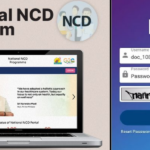Welcome to the digital world’s equivalent of a secret entrance: 127.0.0.1:49342, your guide to navigating the mysterious realm of localhost and ports in networking. Whether you’re a seasoned tech guru or a curious newcomer, this blog post will demystify these essential concepts and empower you to harness their full potential. So grab your metaphorical key and let’s unlock the door to endless possibilities within your own virtual backyard!
Introduction to Localhost and Ports in Networking
Welcome to the mysterious world of 127.0.0.1:49342 – a unique address that holds the key to unlocking a realm of networking possibilities! In this blog post, we will delve into the depths of localhost and ports, shedding light on their significance in the digital landscape. Get ready to embark on an exciting journey as we explore what lies beyond this enigmatic sequence of numbers and punctuation marks!
What is 127.0.0.1:49342?
Imagine 127.0.0.1:49342 as your own secret portal in the vast realm of networking, a unique address that leads you to a specific destination on your computer. This combination of IP address and port number serves as a gateway to access services or applications running locally on your machine.
IP addresses are like the digital coordinates of devices connected to a network, while ports act as entry points for data communication within these devices. When you see 127.0.0.1, think of it as referring back to yourself – it’s the loopback address representing your own device.
Now, when paired with port 49342, this specific connection becomes even more personalized and distinct within the realm of localhost interactions – allowing for precise routing and control over data flow between different software components operating on your system.
In essence, understanding what 127.0.0.1:49342 represents grants you access to a tailored pathway for seamless communication between programs residing right at home in your computer’s environment – an intricate yet powerful tool at your disposal in the world of networking!
Read More: Explore Instagram Stories With Insanony: Your Ultimate Anonymous Viewer
Understanding IP Addresses and Ports
When it comes to networking, understanding IP addresses and ports is crucial for communication between devices. An IP address is like a home address for your device on the network, allowing data packets to find their way. It consists of four sets of numbers separated by periods.
Ports, on the other hand, are like apartment numbers within that home address. They help differentiate between different services or applications running on a single device. Ports range from 0 to 65535, with well-known ports reserved for specific services like HTTP (port 80) or HTTPS (port 443).
Together, IP addresses and ports ensure that data reaches its intended destination efficiently and securely across networks worldwide. So whether you’re browsing the web or sending emails, these fundamental concepts play a vital role in keeping our digital world connected and functional.
The Purpose of Using Localhost and Ports in Networking
Localhost and ports play a crucial role in networking by allowing communication between different applications on the same device or across a network. When you access 127.0.0.1:49342, you are connecting to the localhost IP address using port 49342 for specific software or services running locally.
Ports serve as virtual endpoints that enable data to be sent and received between devices through network connections. Each port is assigned a unique number, like 49342, which helps route incoming data packets to the correct application or service.
The purpose of utilizing localhost and ports is to facilitate internal communication within a system or network without the need for external connections. This setup enhances security by keeping sensitive processes isolated from external threats while enabling efficient data exchange among various components of an application.
Understanding how localhost and ports function allows developers and IT professionals to optimize performance, troubleshoot issues effectively, and ensure seamless connectivity within their systems.
How to Access 127.0.0.1:49342 on Different Operating Systems
Accessing 127.0.0.1:49342 on different operating systems is a breeze once you understand the basics. For Windows users, simply open your web browser and type in “http://127.0.0.1:49342” into the address bar to access the local server running on port 49342.
Mac users can achieve this by opening their Terminal and entering “curl http://127.0.0.1:49342” or using a web browser like Safari or Chrome to navigate to the same URL as Windows users.
Linux enthusiasts can utilize the Terminal as well by typing “wget -O- http://127.0.0.1:49342” or use any preferred web browser just like other operating systems.
Regardless of your operating system preference, accessing 127…
Read More: Unveiling the Truth: A Detailed Review of 72Sold Reviews Houzeo
Common Uses for 127.0.0.1:49342
When it comes to the common uses for 127.0.0.1:49342, developers often utilize this localhost address and port combination for testing and debugging purposes within their local environment. This specific port provides a dedicated space for running applications or services without exposing them to the broader network.
Developers can leverage 127.0.0.1:49342 to check how their software functions in isolation before deploying it live on servers accessible over the internet. By using this localhost setup, they can identify and rectify any issues or bugs efficiently.
Moreover, programmers can also employ 127.0.0.1:49342 as a secure way to run sensitive processes locally without external access, ensuring data privacy and security during development stages.
In essence, 127.0.0.1:49342 serves as a valuable tool in the arsenal of developers, enabling them to streamline their workflow by creating a controlled environment for testing and refining applications before making them public-facing.
Troubleshooting Common Issues with Localhost and Ports
Encountering issues with localhost and ports can be frustrating, but fear not – troubleshooting is here to save the day! One common problem users face is port conflicts. If another application is using the same port as your desired service, conflict arises. To resolve this, check for conflicting applications or switch to a different port.
Another issue could be firewall restrictions blocking access to the designated port. In such cases, adjusting firewall settings or creating exceptions might do the trick. Sometimes, incorrect configurations in network settings can lead to connectivity problems. Double-checking IP addresses and ensuring proper routing can help resolve these issues efficiently.
Additionally, outdated software or drivers may cause compatibility issues with localhost and ports. Keeping everything up-to-date ensures smooth operation without any hiccups. Remember, troubleshooting is all about patience and persistence until you find that sweet solution!
Read More: Unlocking the Secrets of Enjoy4Fun: A Comprehensive Guide
Advantages and Disadvantages
Using localhost and ports like 127.0.0.1:49342 can offer many benefits, such as facilitating local development and testing of applications without affecting live servers. It provides a safe environment to experiment with software configurations before deployment.
On the downside, troubleshooting connectivity issues with localhost or specific ports can be challenging for beginners in networking. Understanding how to configure firewalls and network settings is crucial when working with these concepts.
Overall, mastering the use of localhost and ports like 127.0.0.1:49342 is essential for anyone involved in software development or network administration tasks. With practice and knowledge, you can harness the power of networking tools efficiently for various projects and purposes on different operating systems!











